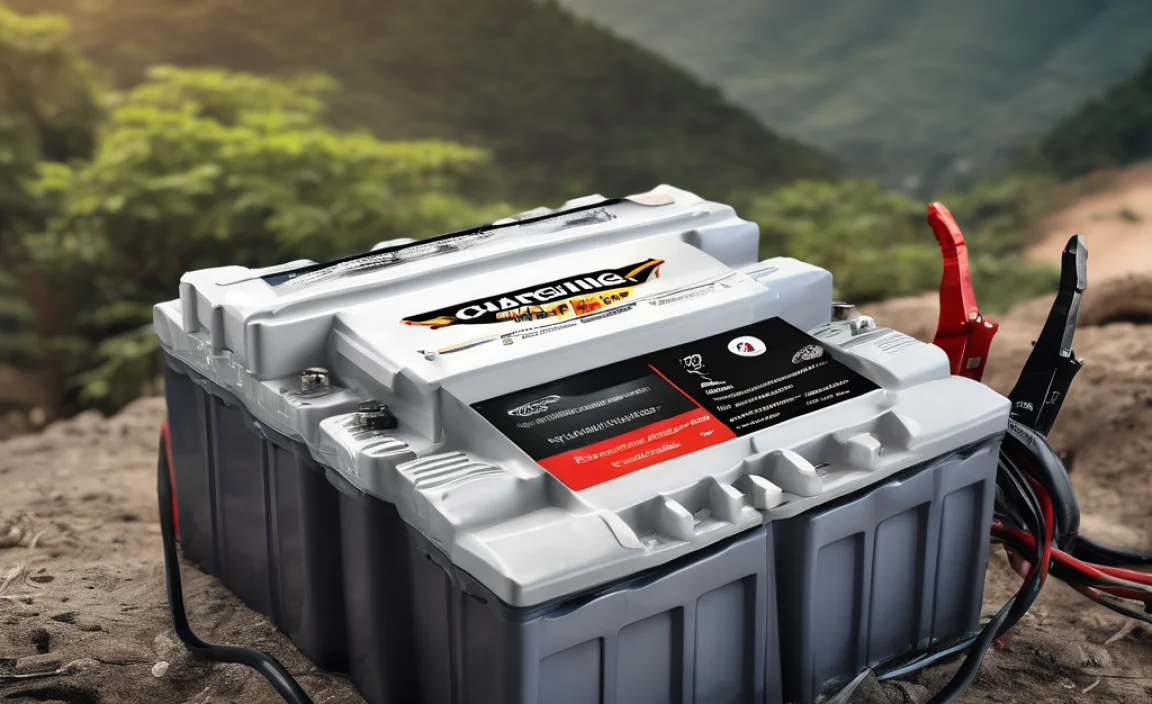Upgrade Your Power: A Straightforward Guide to Add a Second Car Battery
Adding a second car battery can seem like a daunting task, conjuring images of complex wiring diagrams and arcane automotive knowledge. However, for many car owners, particularly those looking to enhance their car audio systems, this modification is surprisingly achievable and incredibly beneficial. Whether you’re a seasoned DIYer or a curious beginner, understanding the fundamentals and following a structured approach can make upgrading your vehicle’s power capabilities a truly “easy” undertaking. This guide will walk you through the process, focusing specifically on how to add a second battery for car audio, ensuring you have the reliable power needed for a superior listening experience.
Why Add a Second Car Battery? The Power Behind the Sound
The primary motivation for many to add a second battery for car audio is to provide a dedicated and robust power source for their sound system. High-powered amplifiers, subwoofers, and multiple speakers can draw a significant amount of current, often exceeding the capacity of a single factory-installed battery. When the stock battery struggles to keep up, you might experience symptoms like:
Dimming headlights during bass-heavy passages: This indicates the electrical system is under strain.
Distorted audio at higher volumes: Insufficient power can lead to clipping and an unpleasant sound.
Premature battery failure: Constantly draining the single battery beyond its intended limits will shorten its lifespan.
Alternator strain: The alternator will work overtime to try and recharge the depleted battery, potentially leading to overheating and damage.
A second battery acts as a power reserve, allowing your audio system to draw the current it needs without compromising your vehicle’s primary electrical functions. This not only improves sound quality but also protects your existing components and ensures your car starts reliably.
Essential Considerations Before You Begin
Before diving into the installation, it’s crucial to consider a few key aspects to ensure a smooth and successful project:
1. Battery Type: For car audio applications, deep-cycle batteries are often recommended. These batteries are designed to provide sustained power output over extended periods, making them ideal for powering amplifiers. Traditional starting batteries are designed for short, high-current bursts to crank the engine and may not be suitable for continuous audio use.
2. Battery Size and Placement: You’ll need to find a suitable location for the second battery. This might involve utilizing an existing space (like near the spare tire, though this can be complex), or fabricating a custom battery tray. Ensure the chosen location is secure, protected from excessive heat and moisture, and allows for proper ventilation. The battery’s physical dimensions will dictate the available space.
3. Isolation: A critical component of a dual-battery setup is an isolator. This device automatically connects the second battery to the charging system when the engine is running (allowing it to charge) and disconnects it when the engine is off, preventing the audio system from draining the primary starting battery. This ensures you can always start your car.
4. Wiring and Fusing: Proper wiring is paramount for safety and performance. You’ll need appropriately sized gauge wire to handle the current demands of your amplifiers. Fuses are non-negotiable safety devices. They protect your wiring and equipment from short circuits and overloads. A main fuse should be installed close to the battery, and individual fuses should be used for each amplifier.
5. Tools and Materials: Gather all necessary tools and materials beforehand. This typically includes:
The second battery
Battery terminals and connectors
Appropriate gauge wiring (e.g., 4-gauge, 0-gauge depending on your system’s needs)
Fuses and fuse holders
Battery isolation system (isolator or voltage-sensitive relay – VSR)
Battery tray and mounting hardware
Wire strippers, crimpers, and cutters
Wrench set and socket set
Multimeter (for testing)
Zip ties and electrical tape for neatness and protection
Step-by-Step Guide: How to Add a Second Battery for Car Audio
With your preparations complete, let’s outline the installation process. Remember to always disconnect the negative terminal of your existing battery before starting any electrical work to prevent accidental shorts.
Step 1: Mount the Second Battery
Securely install your chosen battery tray in its designated location. Then, place the second battery into the tray and fasten it down using appropriate straps or bolts. Ensure it’s firmly in place and won’t move during driving.
Step 2: Install the Battery Isolator
Mount the battery isolator according to the manufacturer’s instructions. Typically, it will have terminals for connecting to the positive terminals of both batteries and the alternator’s output. Some isolators may require a connection to the ignition circuit to activate.
Step 3: Connect the Batteries
From the Second Battery to the Isolator: Run a heavy-gauge positive wire from the positive terminal of the second battery to the designated input terminal on the isolator.
From the Isolator to the Alternator/Main Battery Positive: Connect another heavy-gauge positive wire from the isolator’s output terminal. This wire will either connect directly to the main battery’s positive terminal (if the isolator is designed for this) or to the alternator’s charging stud. Consult your isolator’s manual for the exact connection point for charging.
Connecting the Amplifiers: Run a heavy-gauge positive wire from the second battery’s positive terminal (or a distribution block connected to it) to your amplifier’s power input. Crucially, install an inline fuse as close to the second battery as possible on this wire, sized appropriately for your amplifier’s fuse rating. Do the same for any other components powered by the second battery.
Grounding: Both batteries, your amplifiers, and any other high-current accessories should have a robust ground connection. Ideally, this should be a direct connection to the vehicle’s chassis using appropriately sized wiring. Ensure the grounding point is clean, free of paint or rust, and securely bolted.
Step 4: Final Checks and Testing
Double-check all connections for tightness and correct polarity.
Ensure all wiring is neatly secured and protected from abrasion using zip ties and electrical tape.
Reconnect the negative terminal of your primary battery.
Start the engine. The isolator should engage, and you should see both batteries receiving a charge (you can verify this with a multimeter).
* Test your audio system, gradually increasing the volume. Observe for any dimming lights or distortion.
Conclusion: Enjoying the Enhanced Power
Following these steps, you’ll find that how to add a second battery for car audio is a manageable and rewarding DIY project. The benefits of a stable, ample power supply for your sound system are immediately noticeable, translating to clearer highs, deeper lows, and an overall more immersive audio experience. Remember to prioritize safety throughout the process, use quality components, and don’t hesitate to consult professional resources or guides if you encounter any uncertainties. With your upgraded power foundation, you can now truly unleash the full potential of your car’s sound system.


